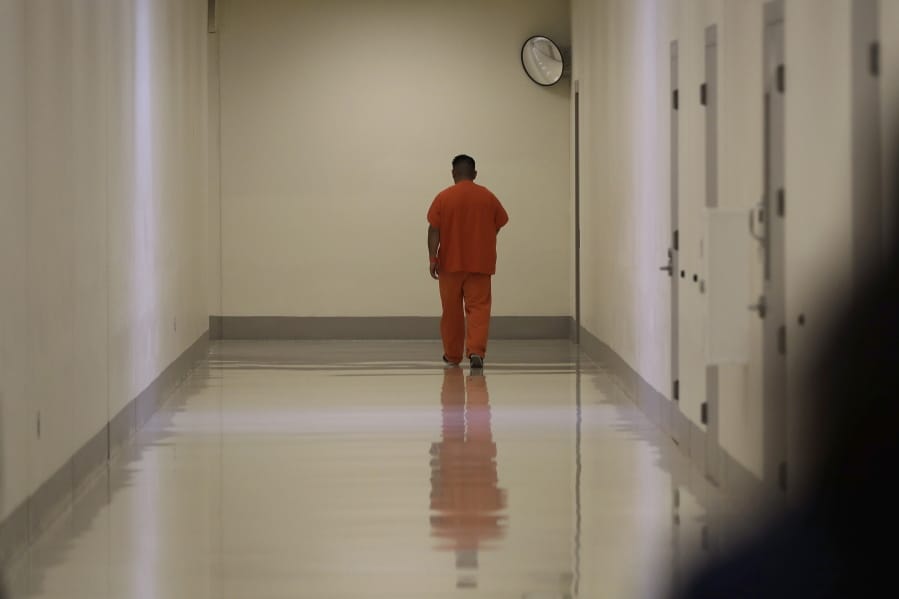TACOMA — After years of complaints and lawsuits over its treatment of immigrant detainees, the federal government invited reporters to take an “inside look” Tuesday at its detention center in Tacoma, recently renamed the Northwest ICE Processing Center.
Nathalie Asher, who arrived in August to head enforcement and removal operations throughout the Northwest for Immigration and Customs Enforcement, said she initiated the first-of-its-kind tour to dispel myths and “bad information” that she said had created a hostile environment for officers at the facility. Some had even received threatening phone calls at home, she said.
And in July, police killed a onetime protester who returned to the detention center and threw incendiary devices — an incident that Asher said could have been catastrophic.
“Certainly, we are not a popular entity in the area,” she said, returning to the subject repeatedly as she led about 15 journalists through the second of two tours Tuesday.
“You will see a well-run operation,” she promised as she started the tour, which showed off bright, white-walled hallways painted by detainees with murals, a medical center with an X-ray and examination rooms, and a pod where detainees sat on bunk beds or talked to each other at metal tables.
Outside the detention center, however, activist Maru Mora-Villalpando declared the tour a whitewash and said just the day before, she had heard from detainees that they had found live maggots in food. Asher said she would look into it.
The privately run detention center is owned by the GEO Group and holds up to 1,575 immigrants accused by the government of living in the U.S. illegally and now facing deportation proceedings.
It comes at a time when detention facilities are in the spotlight, especially those at the border where children are being held in conditions described by doctors, lawyers and advocates for immigrants as inhumane.
Material distributed by ICE before the tour — including forms requiring reporters to stick to strict rules, such as not interviewing detainees — noted that the detention center has never housed children.
Still, controversy has long surrounded the detention center. Detainees have held a series of hunger strikes to protest what they say is inadequate food and $1-a-day wages for what GEO calls a “voluntary work program.” Some hunger strikers have said they were put into solitary confinement and in one case beaten — the subject of an ongoing ACLU lawsuit against ICE and GEO. One hunger-striker died by suicide late last year.
The death of Mergensana Amar, who before taking his life told a lawyer he had been stripped of his clothes and kept in a cold cell with only a thin covering, prompted Gov. Jay Inslee and several Democratic members of Congress to raise concerns about health care and call for an investigation.
The Department of Homeland Security’s Office of Inspector General agreed to investigate Amar’s death, and is still in the process of doing so, according to a spokeswoman.
Asher said she could not talk about Amar’s death, either, while it is under investigation.
Tacoma police reports from the last six years, obtained through a public records request, reveal that the facility has seen at least one attempted suicide before, in 2014, when a detainee cut his wrist and attempted to hang himself with a sheet. The detainee was taken to a hospital.
Asher maintained that medical and mental health care was a top priority, leading the facility to employ doctors, nurse practitioners, psychiatrists and social workers.



